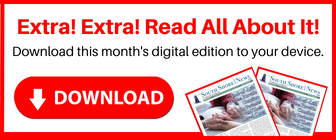By Patricia Prewitt
My Personal Rx Adviser
It takes work to find ways to save money for prescriptions needed on a regular basis. Everyone has a different insurance plan, and Medicare Part D plans can be more challenging than standard commercial plans sponsored by an employer or group.
Here are six quick tips that may help you:
1. Brand-name medications: Take time to check the official brand website to see if there is a savings card or program. If you find a program, simply register for the offer to be sent to your email. Take the card, with its special code numbers with you to the pharmacy. Ask that the card be added to your prescription on file. Even if there is not an offer, you may learn some facts about the therapy to help you to better manage your disease, side effects, or other useful tips.
2. Internet search: Ask Google to find the price of the medication in your zip code by typing “Who has the best price for [drug name] in [your town/zip code]?” This is unlikely to bring up much useful information, but it will show you sponsored advertising for the medication that works for your zip code. It may shorten the time you spend conducting a search. Always compare the Internet price to what you are currently paying. Be sure to note if the price is for 30 days or 90 days of therapy to logically compare pricing.
3. Pay cash: Using a pharmacy savings card from GoodRx, SingleCare, or other local card may save money when compared to using your prescription insurance plan. Prices vary between savings cards, and by zip code, so this can take some time to research. These cards work like a regular coupon and are not processed through your prescription insurance plan, yet they may offer substantial savings. Simply type in the exact medication, dose, and quantity to find the prices with the cards in your area.
4. Prescription assistance: Some companies may offer programs for patients who cannot afford certain medications and who meet certain income criteria. NeedyMeds.org, a 501(c)3 charity, is a good place to start to find links to available programs.
5: Is there a generic? Once patents expire for brand-name medications, generic alternatives come to market pretty quickly. Check to see if there is now a generic version of the medication with the same active ingredients. Difference from the brand may be the dosing schedule, form, or inactive ingredients. Check with your health-care provider to make sure the generic is OK to take before making a change. A new direct-to-consumer option, CostPlusDrugs.com, is a great place to check for generic medications. The website is easy to use, but will require time to set up an account, and to obtain a new prescription.
6. Medication review: Check to be sure all prescriptions are still needed. Have you lost weight, stopped smoking, or begun an exercise regimen that has improved your health? Perhaps medication is no longer needed. Of course, check with your provider before stopping any medication. If prescriptions are filled by mail order, call right away to discontinue the order. Once mailed, the order cannot be returned for credit.
Content provided is for education purposes only, and is not intended as a substitute for advice from a qualified medical professional. The opinions expressed within are those of the author.
About the Author: Patricia Prewitt is a local Massachusetts resident who spent more than 30 years in the pharmaceutical industry. Tricia is a consumer education advocate, and loves helping people find ways to save money on their prescriptions. More information and free resources are available on her website at https://mypersonalrxadvisor.com/resources or call her at 508-507-8840. Favorite Quote: “Act as if what you do makes a difference. It does.” – William James


